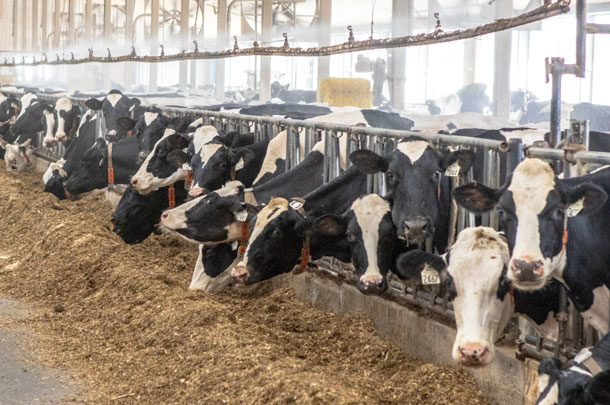Dairy cows are removed from the herd (culled or died) at their 3.07 lactation, and only 39.4 percent of cows have three lactations or more in average Canadian herds.
The top herds have 50.9 percent of cows with three lactations or more; in addition, their cows have good udder health score, age at first calving is 23.7 months, and calving interval is 12.8 months.
Longevity is defined as the time from first calving until the cow is culled from the herd. Reducing the herd culling rate will increase longevity. Culling decisions can be either voluntary (low production, etc.) or involuntary (health, reproduction, etc.).
Although this article does not cover specifically the relationship of culling rate and genetic improvement, an economic analysis was conducted in the U.S. in 2015 with the conclusion that, even if genetic improvement is important, it does not warrant a short cow longevity.
In Canada, the average culling rate is 37 percent, and most of the culling is involuntary. Thirty percent of the culling is done during the first 60 days in milk and is related mainly to transition and early lactation health problems.
At the end of the lactation period, the high culling rate is mainly due to cows that are still not pregnant (Figure 1).

Although there are multiple reasons for culling a cow, recording the reasons for culling is crucial to identify the source of the problems.
In Canada and the U.S., the main reason for involuntary culling is reproduction, at about 20 to 30 percent, followed by clinical mastitis and foot and leg problems.
Involuntary culling of cows in early lactation is particularly harmful to profitability. Concentrating on reducing cow losses at this time is crucial. Focusing on transition cow management and nutrition will be most rewarding.
Supplementing rumen-protected B vitamins is one of the nutritional tools available that have been proven to improve transition health and reproduction, thus reducing involuntary culling rate and increasing cow longevity.
These B vitamins play many metabolic roles and are involved as enzyme co-factors in liver glucose synthesis, liver fat oxidation (degradation of fat into a simple energy compound for the cells), immune response, follicular development, early embryo survival, just to name a few.
Two studies where dairy cows were supplemented with specific blends of protected B vitamins either during the transition or lactation period resulted in a reduction in culling rate (Figure 2).

In the first study, half of the 949 multiparous lactating cows were supplemented with a specific blend of protected B vitamins from day 22 until they were confirmed pregnant.
The first- service conception rate increased by 13 percent (35.8 percent versus 40.6 percent) at 42 days after insemination and stay higher for those supplemented cows until 200 days in milk.
The culling rate was reduced by 20 percent (17.6 percent versus 14 percent) during that same period.
In the second study, conducted on a large commercial dairy herd of 4,000 cows, the supplementation of another specific blend of protected B vitamins and choline was done a few weeks before and after calving.
Supplemented cows had 63 percent less subclinical ketosis, and more cows were pregnant at days in milk 120, 150 and 190.
Culling rate was reduced by 33 percent (32.7 percent versus 22 percent) during the first 190 days in milk.
Clinical mastitis is one of the top reasons for involuntary culling, and it was reduced by more than 60 percent for the first 60 days in milk in studies where dairy cows were supplemented with a specific blend of protected B vitamins and choline before and after calving.
Increasing the longevity of the herd is economically beneficial for the dairy producer and translates into keeping productive and healthy cows longer in the herd, thereby reducing involuntary culling.
The supplementation of specific blends of protected B vitamins has been shown to be a nutritional tool to increase the longevity of dairy cows by improving transition health and reproduction. ![]()
References omitted but are available upon request. Click here to email an editor.
PHOTO: Cows in the feedbunk. Staff photo.

-
Hélène Leclerc
- Technical Support and R&D – Ruminant Nutrition
- Jefo
- Email Hélène Leclerc










